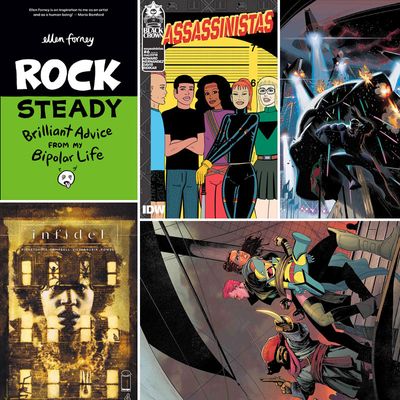
Each month, Abraham Riesman offers recommendations of comics media, including book-length graphic novels, comics-format nonfiction, ongoing series, and comics-related items in other forms. With any luck, at least one of them will be a match for you.
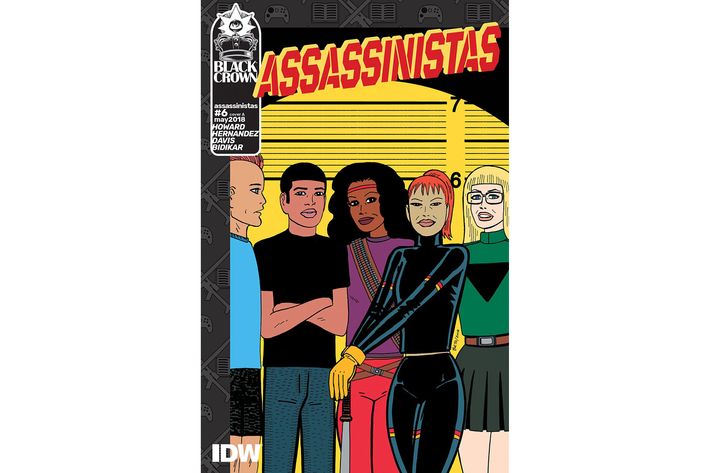
Assassinistas by Tini Howard, Gilbert Hernandez, Rob Davis, Robin Henley, and Aditya Bidikar (IDW / Black Crown)
Any comic that features pencils from Gilbert Hernandez is a cause for celebration. Mix his seasoned talents with the punchy prose of up-and-comer Tini Howard and throw in the editorial instincts of former Vertigo chief Shelly Bond and, baby, you’ve got something really special. A product of Bond’s newish Black Crown comics imprint, Assassinistas is a gleefully bloody dive into the adventures of a trio of women who excel at killing — and the men who support them. After many years of retirement, two of them are pulled back into the game by the nefarious deeds of the third, and all of a sudden, a tightrope must be walked between motherhood and murder. Howard has a clear passion for action flicks and it’s a surreal delight to see Hernandez — best known as a master of picturesque idylls — let his deceptively simple cartooning loose into the realm of blood and blades.
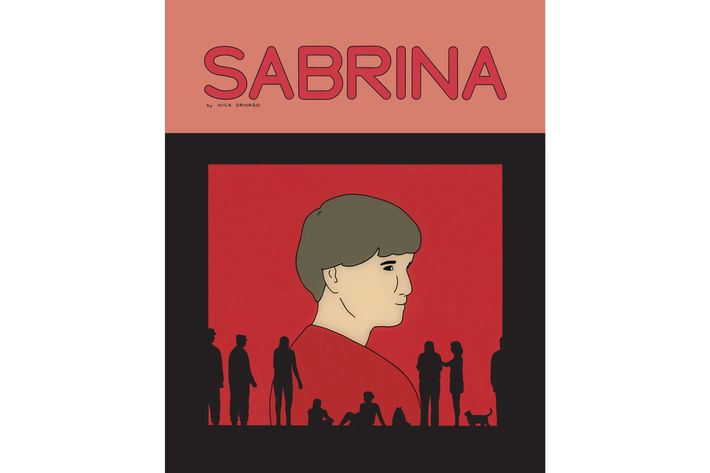
Sabrina by Nick Drnaso (Drawn + Quarterly)
What alarms me most about Sabrina are the smiles. Writer/artist Nick Drnaso has a curious tendency to render his characters’ simple faces with the line for their lips curled into an ever-so-slight curve. When the narrative documents the numbing routines of its engrossingly mundane characters, the dumb grins feel entirely appropriate. But when matters take a turn for the horrifying, those selfsame minute smiles become entirely incongruous, making you question the nature of Drnaso’s visual reality: Are we misinterpreting the visual signals of a curved line? Is the artist positing that a curved line can mean something hideous? Such questions are entirely in line with the existential brutality of Sabrina, which documents a handful of unassuming people who are abruptly thrown into our present-day whirlwind of fake news, conspiracy theorizing, and tragic popular delusion. But though matters spin out into chaos within the story, Drnaso’s storytelling and draughtsmanship are master classes in total control, carefully drawing us in and gradually dismantling our subconscious assumption that bad things don’t happen to good people.
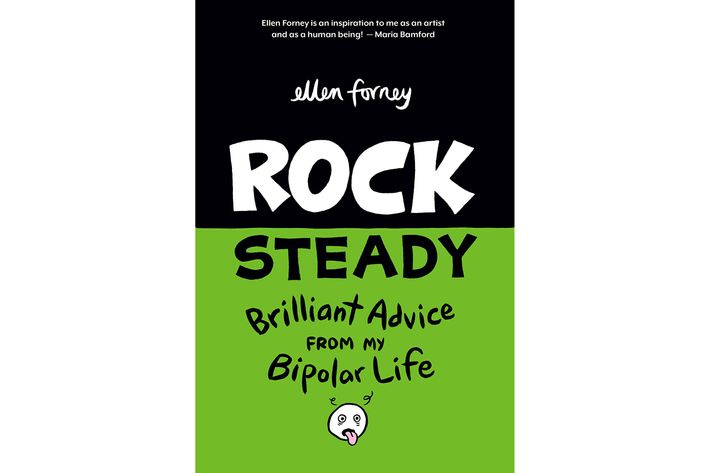
Rock Steady: Brilliant Advice From My Bipolar Life by Ellen Forney (Fantagraphics)
I’m generally skeptical about didactic comics. There are a small handful of classics like Scott McCloud’s Understanding Comics, but more often than not, comics designed to teach feel more like third-grade class handouts than real art. Rock Steady is a terrific exception. In it, cartoonist Ellen Forney seeks to provide her readers with consultation — derived from bitter experience — about how to live with bipolar disorder and its variants. The result is compassionate and informative for sufferers and those who love them, but the book is also worthy of formal and aesthetic praise. Forney has a gift for seamless incorporation of thick line work and punchy text — one never feels like she simply drew a diagram and inserted a caption for it. Though it’s meticulously well-organized, Rock Steady avoids monotony by drawing upon a rotating set of motifs, from “merit badges” for each chapter to an illuminating section in which she documents the thoughts of various famous people who have been diagnosed as bipolar. The aesthetic considerations never get in the way of the clear conveyance of information, but the subtle brilliance of those considerations ensure the conveyance is never dull.
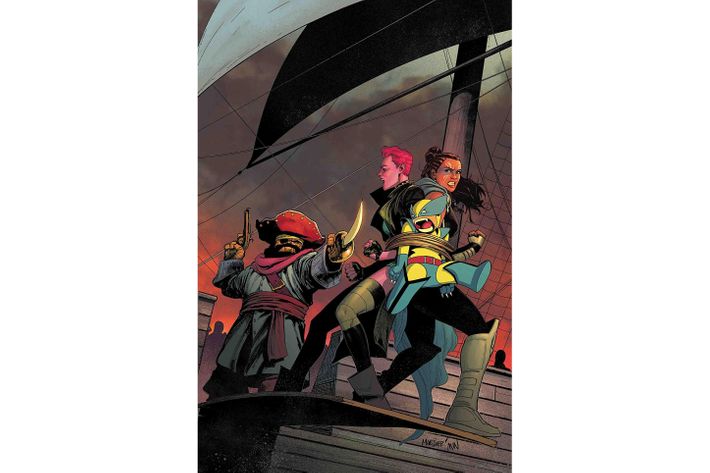
Exiles by Saladin Ahmed, Javier Rodríguez, Álvaro López, Chris O’Halloran, and Joe Caramagna (Marvel)
A multiverse is a tricky thing to play with. One of the great innovations of superhero comics has been Marvel and DC’s respective orreries of parallel universes, where alternate versions of characters play out wild variations on their companies’ mythologies. As narrative devices go, they can be wildly confusing, but in the hands of a loving creator, they can open up opportunities for innovative storytelling and character analysis the likes of which can be found in no other genre. Lucky for us, Exiles is more of the latter than the former. Black Bolt writer Saladin Ahmed — truly one of the finest breakout comics creators of recent years — does a bang-up job of crafting a story in which veteran universe-traveler Blink is linked up with variations on Ms. Marvel, Wolverine, Valkyrie, and Kang the Conqueror in a crusade to save the lives of countless trillions. The writing alone is worth the cover price, but the giddy artwork of Javier Rodríguez, Álvaro López, and Chris O’Halloran makes the whole enterprise explode across the cosmos.
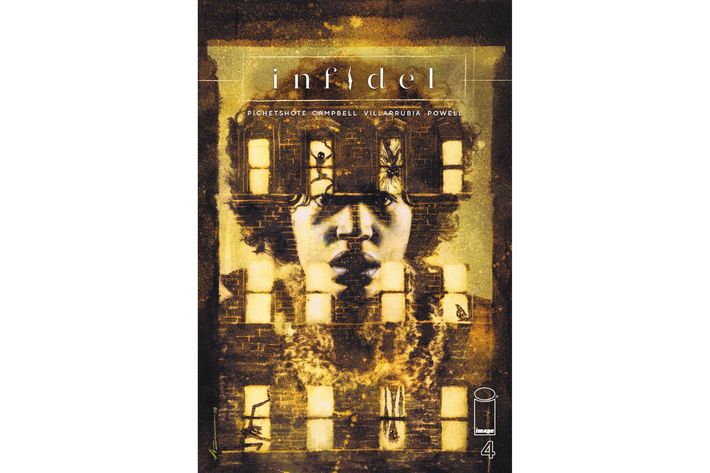
Infidel by Pornsak Pichetshote, Aaron Campbell, José Villarrubia, and Jeff Powell (Image)
In a post–Get Out world, it’s been incumbent upon horror creators to step up their games, no matter the medium in which they work. Whether it’s intentional or not, Infidel feels very much like a spiritual successor to Jordan Peele’s genre-altering masterwork and provides some of the most harrowing scares that comics has seen in years. Former Vertigo editor Pornsak Pichetshote has dreamt up a plot in which a Pakistani-American Muslim woman, already struggling in her efforts to navigate a relationship with her non-Muslim fiancé’s well-meaning but prejudiced mother (and the general Islamophobia of contemporary America), suddenly finds herself experiencing hideous visions, rendered with gruesome grit by penciler Aaron Campbell and colorist José Villarrubia. Infidel has already been picked up for a film adaptation, and if it gets to the finish line, expect it to spark many a shaken conversation by the water cooler.

Exit Stage Left: The Snagglepuss Chronicles by Mark Russell, Mike Feehan, Mark Morales, Paul Mounts, and Dave Sharpe (DC)
We live in an age of sanctioned bigotry, government overreach, and mutual suspicion. Who knew the hero we need is a neon-pink mountain lion? In Exit Stage Left: The Snagglepuss Chronicles, DC continues to defy the expectations we have for comics about licensed pop-culture characters. Writer Mark Russell has taken the Hanna-Barbera cartoon also-ran and reimagined him as a Tennessee Williams–esque gay playwright attempting to maintain his dignity in the face of intolerance and a Red Scare crackdown on subversives. The resulting tale — filled with thoughtful cameos from historical figures of the early 1950s — is loquacious and shockingly moving, and the unsettlingly deft anatomy and evocative facial acting from penciler Mike Feehan will make you weep for this furry fatalist.

Black Panther by Ta-Nehisi Coates, Daniel Acuña, and Joe Sabino (Marvel)
The latest relaunch of Black Panther could hardly be more conceptually removed from the recent film of the same name. The latter, though tinged with science-fiction mishegoss, was more or less Earthbound. The comic, on the other hand, is a bounding leap into space opera. Ta-Nehisi Coates goes for the most ambitious premise of his still-young comics career: What if a contingent of Wakandans traveled to the farthest reaches of outer space and, thousands of years later, found themselves in possession of a vast, intergalactic empire? But wait, thousands of years after what? When, exactly, is this story taking place? And who are these characters calling themselves by familiar names? The story is filled with such questions, and unlike some of Coates’s previous Panther work, this story (so far) requires only a basic working knowledge of the character’s mythos. And holy moley, the action sequences! Daniel Acuña has a gift for acrobatics and laser blasts and his colors would feel right at home on a classic sci-fi paperback.
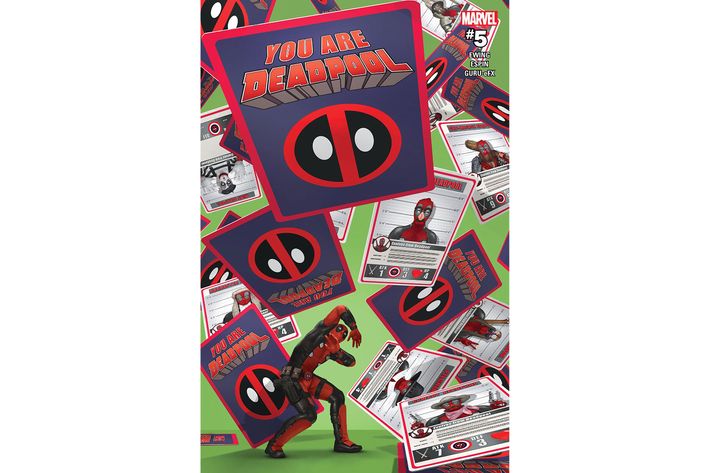
You Are Deadpool by Al Ewing, Salva Espin, Paco Diaz, Guru e-FX, Joe Sabino, and Nicholas Russell (Marvel)
Good lord, this book is way more fun than it has any right to be. I’ll fully admit that I got sick of Deadpool as a concept years ago, but You Are Deadpool is doing a stunning job of convincing me that the character still has conceptual gas in his tank. This offering is a combination of a role-playing game and a choose-your-own-adventure novella, constructed solely with the basic functionality of a comic (you can get it digitally or in print, and each version provides unique playing experiences).* Artists Salva Espin and Paco Diaz do a terrific job of bouncing DP all over the walls, but we must reserve our highest praise for the stellar genre-lampooning humor (and I say that as someone who has a low tolerance for genre-lampooning humor) of writer Al Ewing and the awe-inspiring narrative latticework that he has constructed with designer Nicholas Russell. The thing is so elaborate and immersive that you’ll forget the only functionality the comic has is the turning of pages. You can read this sucker on its own, but it’s a hell of a lot more fun with dice and a worksheet.
*A previous version of this article incorrectly said You Are Deadpool was only available digitally.

